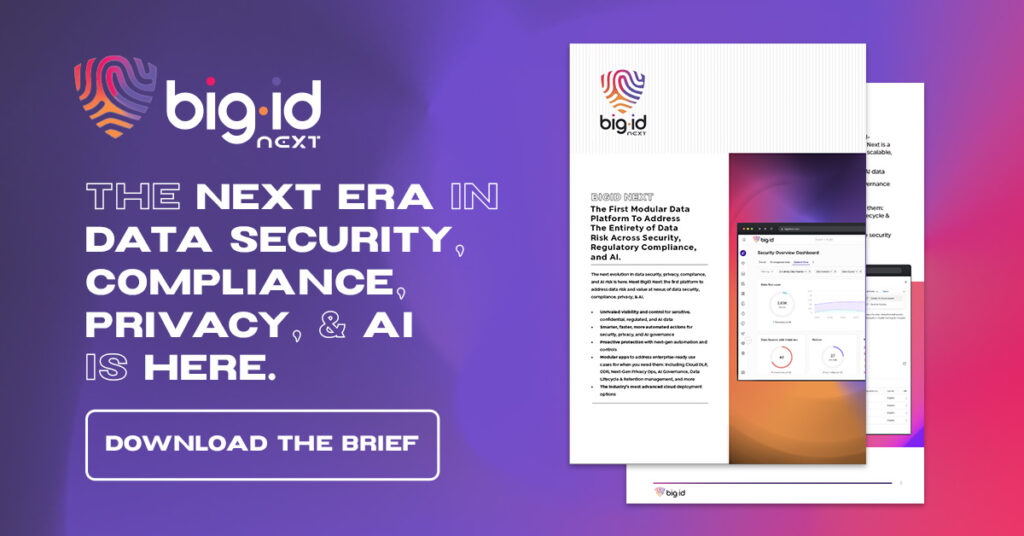En el mundo actual impulsado por los datos, la postura de seguridad de su organización no solo depende de firewalls y herramientas de puntos finales, sino también de capas inteligentes centradas en los datos que comprenden Qué son los datos, quién los accede, a dónde se mueven y cuándo están en riesgo.
Muchas hojas de ruta de seguridad ya incluyen elementos básicos como DLP o clasificación, pero una hoja de ruta madura arquitectura de seguridad de datos Exige una mayor cobertura, operacionalización y orquestación. A continuación, se presenta una pila moderna: diez tecnologías de seguridad de datos, sus diferencias y cómo convertirlas en capacidades activas (no en software de almacenamiento).
1. Descubrimiento e inventario de datos (también conocido como mapeo de datos)
Qué es (en detalle):
Escanear todos los sistemasBases de datos, recursos compartidos de archivos, depósitos en la nube, aplicaciones SaaS, lagos de datos, entornos de desarrollo y pruebas para localizar activos de datos (estructurados, semiestructurados y no estructurados). Cree un catálogo actualizado de dónde se encuentran los datos.
Por qué es importante:
No puedes proteger lo que no puedes verLos puntos ciegos conducen a la falta de gobierno. datos de sombra que los atacantes explotan.
Consejo operativo/caso de uso:
Escanee cada nueva incorporación a la nube, automatice escaneos incrementales para almacenes de datos modificados e ingrese los hallazgos en un catálogo de datos central que comparten la seguridad y la gobernanza.
2. Clasificación y etiquetado de datos (sensibilidad/riesgo)
Qué es:
Utilice aprendizaje automático, coincidencia de patrones, metadatos y reglas contextuales para asignar etiquetas como “PII”, “HIPAA”, “Secreto comercial”, “Regulado”, “Solo interno”, “Se permite compartir externamente”, etc.
Por qué es importante:
Etiquetas = desencadenantes de políticas. Sin una clasificación detallada, las herramientas posteriores (DLP, control de acceso, análisis) operan con suposiciones burdas, lo que provoca bloqueos excesivos o falsos negativos.
Consejo operativo/caso de uso:
Ajuste los clasificadores mediante bucles de retroalimentación (p. ej., correcciones con intervención humana). Utilice una clasificación multicapa (basada en contenido, contexto y uso) para reducir los falsos positivos.
3. Análisis de derechos y acceso (gobernanza de permisos)
Qué es:
Analizar quién o qué (usuarios, grupos, servicios) tiene qué nivel de acceso a qué datos. Detectar roles sobreprivilegiados, permisos obsoletos, anidación de grupos, acceso entre inquilinos, etc.
Por qué es importante:
Incluso los datos bien clasificados corren peligro si sistemas o usuarios no autorizados pueden acceder a ellos. El control de derechos marca la frontera entre el «riesgo oculto» y la «explotación de datos».
Consejo operativo/caso de uso:
Realice recertificaciones frecuentes de derechos. Conéctese a los sistemas de gobernanza de identidades y gestión de identidades y accesos (IAM). Utilice “zonificación de mínimos privilegios” para segmentar el acceso a los datos por proyecto, equipo o sensibilidad.
4. Gestión de la postura de seguridad de datos (DSPM)
Qué es:
Una evaluación holística y continua de la postura de riesgo de los datos: configuraciones incorrectas, exposiciones, patrones de acceso anómalos, brechas de políticas, desviación de permisos y puntuación de riesgo entre sistemas.
Por qué es importante:
DSPM Cambia el paradigma de reactivo a proactivo. En lugar de simplemente aplicar controles (como DLP), usted sabe si sus datos se encuentran en una "postura segura" de forma continua.
Lo que falta en las pilas básicas:
Muchas organizaciones tratan el DSPM solo como "descubrimiento y análisis". Pero el verdadero valor surge cuando DSPM incluye contexto consciente de la identidad, priorización de riesgos y remediación. BigID extiende el paradigma añadiendo remediación automatizada capacidades y cobertura en todos los canales de IA.
Consejo operativo/caso de uso:
Ejecute verificaciones de postura alineadas con el modelado de amenazas (p. ej., aísle los conjuntos de datos clave). Utilice DSPM para impulsar flujos de trabajo de riesgo a remediación, incorporar alertas a SIEM/SOAR e iterar.
5. Prevención de pérdida de datos (DLP/DLP en la nube)
Qué es:
Aplicación de políticas sobre datos en movimiento, datos en uso y (en formas modernas) datos en reposo. DLP Los sistemas monitorean, bloquean, enmascaran, cifran o ponen en cuarentena el contenido que viola las reglas.
Por qué es importante:
Incluso con la clasificación y la postura establecidas, todavía se necesita un mecanismo para prevenir la exfiltración accidental o maliciosa en tiempo real.
Novedades frente al DLP tradicional:
Las herramientas DLP heredadas dependen en gran medida de agentes o servidores proxy y, a menudo, generan muchos falsos positivos o una cobertura insuficiente en las plataformas SaaS y nativas de la nube. DLP en la nube de BigID Este enfoque fusiona el descubrimiento y la clasificación ascendentes con la aplicación nativa, trasladando los controles más cerca de donde residen los datos en lugar de a los límites del tráfico.
Consejo operativo/caso de uso:
Utilice activadores "data-first" (clasifique antes de mover los datos), integre con pilas DLP existentes a través de metadatos/etiquetas y aplique en API o plataformas nativas (en lugar de un redireccionamiento pesado basado en agentes).
6. Detección y respuesta de datos (DDR/Análisis de comportamiento)
Qué es:
Monitorizar y detectar Acceso, movimiento o comportamiento de datos anormal o riesgoso (p. ej., descargas masivas, sincronización inusual, pivoteo sospechoso). Activar investigaciones o respuestas automatizadas.
Por qué es importante:
La aplicación estática de políticas no detecta amenazas internas sutiles ni usos indebidos. La DDR aumenta la barrera al detectar patrones anómalos que las normas políticas podrían no prever.
Consejo operativo/caso de uso:
Perfile las líneas base de uso normal por conjunto de datos o usuario. Utilice la puntuación de anomalías para reducir el ruido. Vincule las señales DDR con los sistemas de orquestación (cuenta de cuarentena, SOC de alerta).
7. Linaje de datos y seguimiento del flujo
Qué es:
Monitoree la transferencia de datos entre sistemas, pipelines, transformaciones y hasta la derivación de modelos/análisis. Capture las dependencias de transformación, los eventos de copia/bifurcación y los procesos de retención.
Por qué es importante:
Lineage le ayuda a auditar la procedencia, evaluar el impacto de los cambios, rastrear las causas fundamentales de las fugas y aplicar “políticas de movimiento de datos” (por ejemplo, no permitir que ciertos datos alimenten modelos externos).
Consejo operativo/caso de uso:
Utilice el linaje para aplicar pasos de desinfección (por ejemplo, uso de enmascaramiento antes del entrenamiento del modelo), generar registros de auditoría para consultas regulatorias y evaluar rápidamente el radio de explosión de las configuraciones incorrectas.
8. Derechos de datos y minimización de la aplicación
Qué es:
Apoye el “derecho al borrado”, las solicitudes de acceso/eliminación de datos y las políticas para purgar, archivar o minimizar datos según las reglas del ciclo de vida (por ejemplo, políticas de retención).
Por qué es importante:
Regulaciones como GDPR, CPRA, y emergentes Leyes sobre IA y riesgos de IA Exigir el cumplimiento de los derechos de los interesados y la minimización de datos. Hacerlo manualmente es insostenible.
Consejo operativo/caso de uso:
Automatice los flujos de trabajo de eliminación o archivado. Utilice las capas de clasificación y linaje para localizar todas las copias de datos y garantizar su eliminación o censura. Proporcione un registro de auditoría que muestre cuándo y cómo se eliminaron los datos.
9. Secretos, claves API y escaneo de credenciales
Qué es:
Detectar secretos incrustados (claves, tokens, credenciales) en repositorios de código, archivos de configuración, contenedores y almacenes de datos. Monitoree el uso y las anomalías relacionadas con los secretos.
Por qué es importante:
Las filtraciones de credenciales son un vector frecuente de vulneración de datos. Un secreto incrustado en un repositorio de pruebas puede proporcionar acceso lateral a sistemas sensibles.
Consejo operativo/caso de uso:
Integre el escaneo en los procesos de CI/CD. Al encontrar una credencial, rótela o deshabilítela automáticamente, revoque los permisos asociados y alerte a los equipos correspondientes.
10. Gobernanza de datos y controles de riesgos de IA/ML
Qué es:
Como empresas adoptar IADebe controlar los datos utilizados para el entrenamiento, la inferencia, la desviación del modelo y las posibles fugas. Monitorear las indicaciones de LLM, incrustaciones, ajuste de conjuntos de datos y uso de IA en la sombra.
Por qué es importante:
Los datos confidenciales que fluyen hacia los modelos de IA pueden exponer inadvertidamente PII o propiedad intelectual, especialmente en multiinquilino o entornos de copiloto.
Consejo operativo/caso de uso:
Escanee y clasifique conjuntos de entrenamiento. Bloquee o elimine características sensibles antes del entrenamiento. Supervise la entrada/salida del modelo para detectar contenido de alto riesgo. Aplique el linaje de los modelos y el control de versiones de datos. BigID integra de forma única una gobernanza basada en IA en su plataforma para evitar fugas de IA oculta.
Uniéndolo todo: de las herramientas a la operacionalización
Disponer de estas tecnologías no es suficiente. La diferencia entre un programa piloto y uno en desarrollo radica en la operacionalización: la integración de flujos de trabajo, ciclos de retroalimentación, la coordinación entre equipos y la maduración continua.
He aquí un enfoque pragmático:
- Define tu estrategia de dominio de datos: Elija un dominio de datos significativo; por ejemplo, información médica protegida (PHI) en sus sistemas médicos, información personal identificable (PII) de clientes o propiedad intelectual sensible. Empiece con poco y amplíe su alcance.
- Crear un plan de implementación incremental: Comience con el descubrimiento, la clasificación, el análisis de derechos y la gestión de la vulnerabilidad de seguridad (DSPM). Incorpore gradualmente la DLP, la DDR y la remediación. No intente hacer todo de la noche a la mañana.
- Establecer una priorización basada en riesgos: Utilice la puntuación DSPM para clasificar primero los activos de datos de mayor riesgo. Corrija los problemas más fáciles (por ejemplo, los contenedores sobreexpuestos o el acceso obsoleto) para obtener resultados.
- Bucles de retroalimentación de diseño: Cuando DLP detecta un evento, lo incorpora a la clasificación y a las autorizaciones para optimizar la precisión. Utiliza los datos de incidentes para ajustar los umbrales de anomalía.
- Integrar en operaciones de seguridad / SOAR / emisión de tickets: Habilite la creación automática de tickets, la aplicación de políticas o incluso acciones de arrepentimiento (por ejemplo, revocación automática) en lugar de pasos manuales.
- Gobernar con métricas y modelos de madurez: Realice un seguimiento del “tiempo de remediación”, la cobertura de la clasificación, las tasas de falsos positivos, las fugas evitadas, la desviación de las políticas y la alineación con los objetivos comerciales.
- Alinearse con las partes interesadas: privacidad, cumplimiento, legal, ingeniería de datos: Comparta paneles, registros de auditoría e informes de excepciones para crear una responsabilidad compartida. La seguridad de los datos se convierte en parte integral del funcionamiento de la empresa, no solo en una casilla de verificación.
- Escala a medida que evoluciona tu panorama de datos: A medida que incorpore nuevos servicios en la nube, módulos de IA o datos de terceros, incorpórelos a su pila de seguridad desde el primer día.
Por qué muchas pilas de seguridad siguen incompletas: los puntos ciegos
La mayoría del "contenido principal" aborda DLP, DSPM y clasificación, pero muchos omiten o minimizan:
- Detección de comportamiento (DDR): Está bien saber qué datos deben ser estáticos, pero detectar desviaciones es esencial para atrapar amenazas avanzadas o internas.
- Linaje y flujo de datos: Sin conocer el linaje, no se puede entender completamente dónde proliferan los datos copiados ni cómo llegaron a una brecha.
- Riesgo de fuga de IA/modelo: A medida que se acelera la adopción de IA, los datos utilizados en el entrenamiento o la inferencia se convierten en una nueva superficie de ataque.
- Remediación / orquestación: Muchas herramientas DSPM se limitan a las alertas. BigID prioriza la "remediación práctica" (por ejemplo, eliminación, revocación, redacción y aplicación de la retención automatizadas), cerrando así el círculo.
- Gobernanza de acceso/derechos: Muchos proveedores de clasificación o DLP ignoran el aspecto de los permisos: quién puede realmente acceder a los datos.
- Escaneo de secretos y credenciales: Un espacio que a menudo se deja en manos de DevSecOps, pero que está estrechamente vinculado a la seguridad de los datos.
Nuestro enfoque integra estas capas en una plataforma unificada de seguridad de datos: descubrimiento, clasificación, postura, comportamiento, remediación y gobernanza de la IA. Así es como se logra. defensa en profundidad en la capa de datos, especialmente para entornos modernos de nube, SaaS e IA.
Cierre las brechas con BigID: seguridad de datos que funciona
Los líderes de seguridad ya saben que la DLP, la clasificación y la gestión de la postura son necesarias, pero a menudo insuficientes por sí solas. Lo que distingue una defensa reactiva de un programa moderno y proactivo es el tejido conectivo: detección de comportamiento, linaje, remediación, gobernanza de la IA e integración en las operaciones diarias.
La arquitectura de BigID está construida con esta sinergia en mente: no como silos separados, sino como una plataforma unificada que le permite descubrir, clasificar, calificar el riesgo, detectar comportamiento anómalo y remediarlo (en canales de nube, SaaS e IA) sin unir a múltiples proveedores o equipos.
¿El resultado? Remediación más rápida, menos falsos positivos, cobertura escalable y un panel único y consolidado para el riesgo de los datos. ¡Programe una demostración 1:1 con nuestros expertos en seguridad hoy mismo!
Preguntas frecuentes (FAQ)
P: ¿No es suficiente DLP en los entornos actuales?
R: No. La DLP tradicionalmente opera de forma reactiva en los extremos de la red o de los endpoints. Con frecuencia, omite datos nativos de la nube, clasifica incorrectamente el contenido y carece de contexto sobre la identidad o la postura. Se necesita visibilidad ascendente desde la clasificación y el DSPM. El diseño de DLP en la nube de BigID integra a la perfección el descubrimiento y la aplicación de la normativa. (BigID)
P: ¿En qué se diferencia DSPM de CSPM?
R: CSPM (Gestión de la Postura de Seguridad en la Nube) aborda las configuraciones incorrectas de la infraestructura, el cumplimiento normativo y la configuración de los servicios en la nube. DSPM se centra en los datos en sí: su clasificación, acceso, exposición y ciclo de vida en diferentes entornos (nube, SaaS, local). A menudo se necesitan ambos, pero DSPM cubre la brecha que deja CSPM en la protección de datos.
P: ¿Cómo puedo evitar la fatiga de alertas y los falsos positivos?
A: Utilizar una clasificación en capas, señales que tengan en cuenta la identidad, una puntuación de riesgo priorizada (no una regla plana de “coincidencia/no coincidencia”) e integrar bucles de retroalimentación de las investigaciones para refinar las políticas.
P: ¿Cómo puedo implementar gradualmente estas diez tecnologías?
R: Comience con el descubrimiento, la clasificación, las autorizaciones y la gestión de la vulnerabilidad de datos (DSPM). Utilice esta base para instrumentar la prevención de pérdida de datos (DLP), la descentralización de datos (DDR) y la remediación. A continuación, añada el linaje, la aplicación de derechos, el análisis de secretos y la gobernanza de la IA en oleadas.
P: ¿Qué obstáculos organizacionales suelen frenar las iniciativas de seguridad de datos?
A: Los desafíos clave incluyen:
- Falta de una clara rendición de cuentas del “propietario de los datos”
- Proliferación de herramientas y soluciones puntuales aisladas
- Dificultad para escalar la clasificación o manejar fuentes nativas de API
- Falta de alineación con la privacidad, lo legal y la ingeniería
- Sobrecarga de alertas y automatización inadecuada
BigID aborda muchos de estos obstáculos al proporcionar flujos de trabajo unificados, automatización, contexto consciente de la identidad y cobertura entre dominios.



